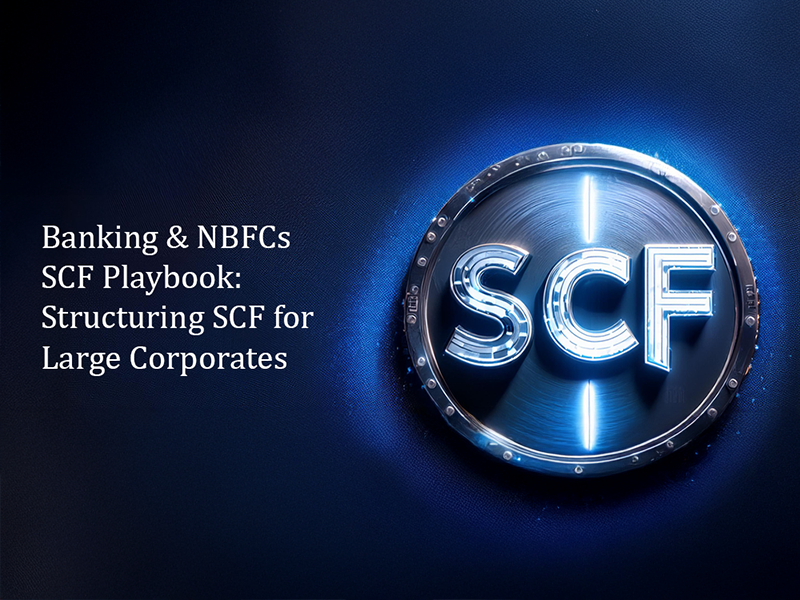Industry Insights: The Greensill Debacle - Lessons for Supply Chain Finance
If you’ve been in finance long enough, you’ve probably heard the name Greensill whispered in hushed tones, as if it were a cautionary tale told around a campfire to scare young investment bankers.
Greensill wasn’t just a failure—it was a spectacular implosion, the kind that makes regulators wake up in cold sweats and CFOs start using words like “prudence” and “risk management” more frequently.
But before we write off Supply Chain Finance (SCF) as some financial villain, let’s break down what went wrong, what lessons we can learn, and why Greensill’s mess was not a failure of SCF itself, but rather a masterclass in how not to run an SCF operation.
In its prime, Greensill Capital was the rockstar of SCF—promising liquidity, faster payments, and working capital optimization. It claimed to democratize finance, using innovative tech and structuring solutions that allowed businesses of all sizes to get credit based on their supply chains.
Sounds great, right? Well, there was just one small problem… Greensill started financing invoices that didn’t actually exist.
Yes, you read that right. Instead of just financing real transactions, they started giving credit based on future expected invoices, essentially saying, “Don’t worry, we’ll get paid... eventually.” That’s not SCF. That’s a very sophisticated version of IOU roulette.
And when a company at the center of your financing ecosystem—like GFG Alliance (Liberty Steel)—starts struggling, suddenly all those hypothetical invoices turn into a whole lot of real defaults.
True SCF should always be grounded in actual invoices, with actual payment terms, between actual businesses. Greensill blurred the lines between SCF and structured credit voodoo, turning supply chain financing into something closer to a speculative lending scheme.
Key takeaway:
🚨 If your SCF program involves financing payments that haven’t even been agreed upon yet, you’re not doing SCF—you’re gambling.
One of Greensill’s fatal flaws? Overexposure. They put too many eggs in too few baskets, relying on a handful of large, high-risk clients like GFG Alliance.
When you have an SCF operation that is so concentrated that one client defaulting can bring down the whole house, you’re doing it wrong.
Key takeaway:
📌 A well-run SCF program spreads risk across multiple industries, geographies, and counterparties.
If you’re relying on just one or two massive clients, you’re not running an SCF platform—you’re running a time bomb with a ticking interest rate.
Greensill’s operations were so opaque that even SoftBank—yes, the people who once backed WeWork at a $47 billion valuation—got burned by their lack of transparency.
The financial structures were complex, the risks were buried in footnotes, and regulators were left playing catch-up.
A good SCF program should be boringly transparent:
✅ Every financed invoice should have clear documentation.
✅ Risks should be understood, not hidden in legal jargon.
✅ Funders should know exactly what they’re financing.
If you need a forensic accountant and a PhD in financial wizardry to understand your SCF program, you’re doing it very, very wrong.
A major issue with Greensill’s clients? Many of them were utterly dependent on its financing. When the firm collapsed, they were instantly thrown into crisis.
Healthy companies should never be entirely reliant on SCF for working capital. It’s a tool, not a lifeline. If your business can’t survive without SCF, it’s not SCF-dependent, it’s just financially fragile.
Key takeaway:
📌 SCF should enhance liquidity, not replace a sound financial strategy.
After Greensill’s collapse, regulators worldwide woke up fast. Suddenly, SCF—which had long operated in a gray area—became a hot topic for compliance, risk assessment, and transparency reforms.
If your SCF program isn’t prepared for tighter scrutiny, now’s the time to fix that.
Key takeaway:
📌 SCF programs need to operate above board, with clear disclosures and zero funny business.
Greensill wasn’t a failure of Supply Chain Finance—it was a failure of greed, overengineering, and bad risk management.
SCF, when done right, is one of the safest and most effective ways to unlock working capital and improve cash flow. But like any financial tool, it only,strong> works if you use it responsibly.
So the next time someone brings up Greensill as proof that SCF is risky, remind them:
🚀 SCF isn’t the problem—bad execution is.



